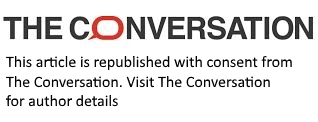Is TikTok right? Do I need to eat more protein?
- Written by Nick Fuller, Clinical Trials Director, Department of Endocrinology, RPA Hospital, University of Sydney

In the ever-changing wellness industry, one diet obsession has captured and held TikTok’s attention: protein.
Whether it’s sharing snaps of protein-packed meals or giving tutorials to boost your intake, the message is clear: maximum protein consumption is essential for weight management and wellness.
Supermarkets have fed this obsession, stacking the shelves with protein-packed bars, shakes and supplements, and protein-boosted versions of just about every food we eat.
But is all this extra protein as beneficial as it’s made out to be? How much protein do we really need?
Read more: Protein is being added to yoghurt, bread and even coffee – but is it really good for our health?
Different types of protein
Protein is an essential macronutrient our bodies need to function correctly. It’s made up of building blocks called amino acids. Twenty amino acids link in different combinations to form proteins that are classified into:
When we think about protein, animal-based foods such as meat, chicken, fish, eggs and dairy products are usually top of mind.
However, the essential amino acids we need to get from our diet can also be found in many plant-based foods, including legumes, nuts, seeds, wholegrains and soy products like tofu.
Why we need protein
Proteins are often called the workhorses of life. They’re involved in virtually every process that keeps our bodies functioning and play a vital role in:
building and repairing tissue. From our muscles and bones to our skin and nails, proteins are responsible for their growth, renewal and repair
fighting infection. Our immune system relies on antibodies, a type of protein, to fight off bacteria and viruses
transporting substances such as nutrients and blood sugar through our bodies and taking oxygen from our lungs to our cells
regulating processes. Most of the hormones controlling crucial functions, like our metabolism, are proteins
managing activity. Protein catalysts, in the form of enzymes, manage vital chemical reactions driving important actions in our bodies, including our ability to digest food
providing energy. Protein isn’t a primary energy source but it can be used for energy when other sources are low.
Protein also plays an essential role in weight management by:
So influencers have it half right: protein is a must-have. But that doesn’t mean it’s a more-is-better situation.
How much protein do we actually need?
Our daily protein requirements are based on our body weight, gender and age.
Protein should account for around 15–25% of our total daily energy intake, with the national guidelines recommending
women consume 0.75 grams of protein per kilo of body weight (and 1.0 grams per kilo of body weight when pregnant or breastfeeding)
men consume 0.84 grams of protein per kilo of body weight.
A woman weighing 72 kilos, for example, should consume 54 grams of protein daily, while a man weighing 87 kilos should consume 73 grams.
Our recommended protein intake changes as we age, with adults aged over 70 requiring 25% more protein than younger people – or around 67 grams of protein daily for women and 91 grams for men.
This is because, as we age, our bodies stop working as efficiently as before. Around the age of 40, we start experiencing a condition called sarcopenia, where our muscle mass naturally declines, and our body fat starts increasing.
Because muscle mass helps determine our metabolic rate, when our muscle mass decreases, our bodies start to burn fewer calories at rest.
Given the role protein plays in muscle growth and preservation, it’s even more vital as we age.
Read more: What can you do to speed up your metabolism?
What does this look like in real life?
By including a protein source at every meal, you can easily meet your daily protein needs. With the example below, you end up with around 125g a day for men and around 100g for women.
Broken down into meals, this might look like:
breakfast: chickpea scramble = 1.5 fist-sizes of protein
morning tea: Greek yoghurt and a handful of nuts
lunch: beef stir fry = 1 fist-size of protein
afternoon tea: hummus, veggie sticks and one boiled egg
dinner: lentil and beef bolognese, and salad = half a fist-size of protein.
What happens when we consume too much protein?
The wellness industry may make you think you’re not getting enough protein. But for most people, we are fixating on a problem that doesn’t exist. In fact, you can get too much, when at levels of greater than 2 grams per kilo of body weight per day.
A diet excessively high in protein can lead to nutritional deficiencies that can result in poor immune function, fatigue and a decrease in bone density because you’re likely to lose out on other nutrients.
High meat intake, particularly processed meats, may also increase our risk of cancer and heart disease, and can come with a surplus of energy that leads to weight gain.
Balance is key
Aim for a diet balanced across all of the macronutrients we need: wholegrain carbohydrates, healthy fats and protein.
As a guide, aim to fill a quarter of your plate with lean protein (lean meat, poultry, fish, eggs, tofu, nuts, seeds, legumes or beans), a quarter with wholegrain carbohydrates and the rest with vegetables and fruits.
And avoid those unnecessary, protein-boosted foods and supplements – your health, weight and hip pocket will thank you for it.
At the Boden Group, Charles Perkins Centre, we are running clinical trials for metabolic health. You can register here to express your interest.
Authors: Nick Fuller, Clinical Trials Director, Department of Endocrinology, RPA Hospital, University of Sydney
Read more https://theconversation.com/is-tiktok-right-do-i-need-to-eat-more-protein-234375





